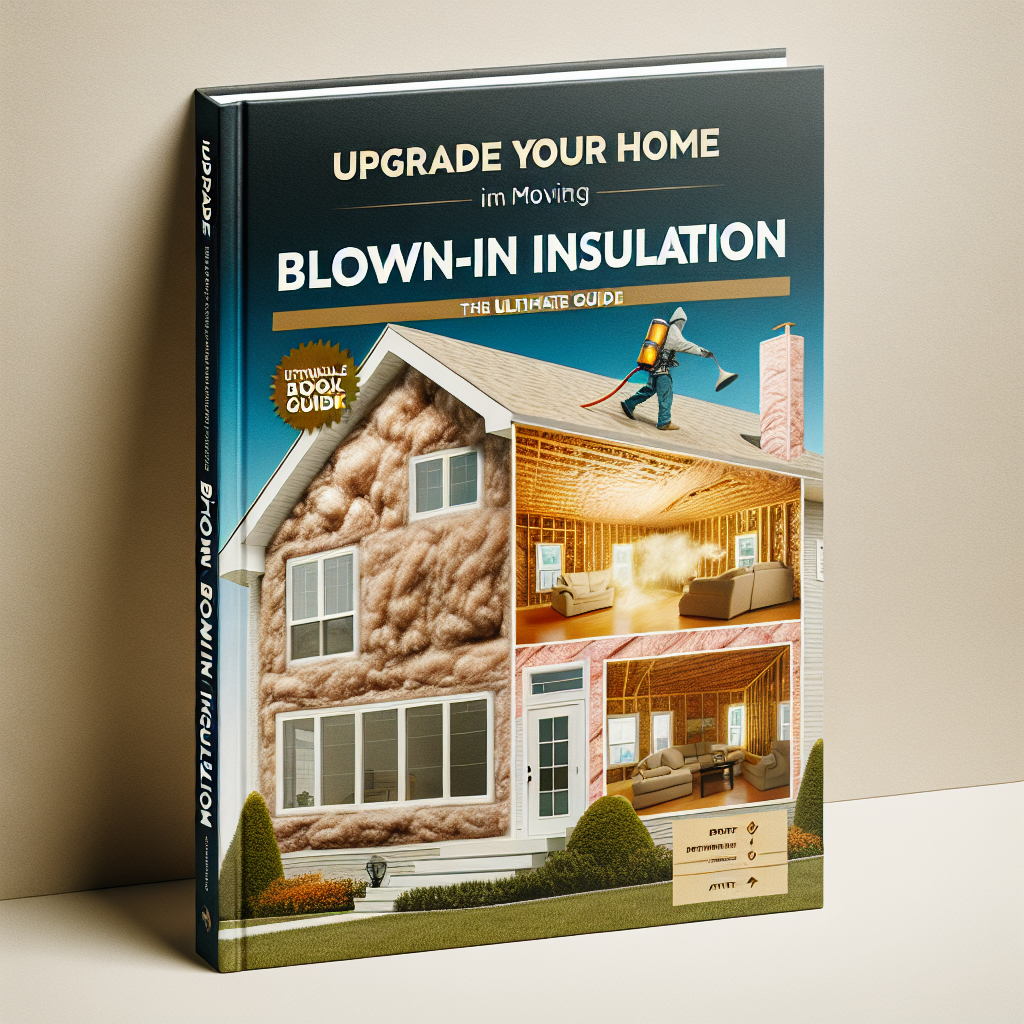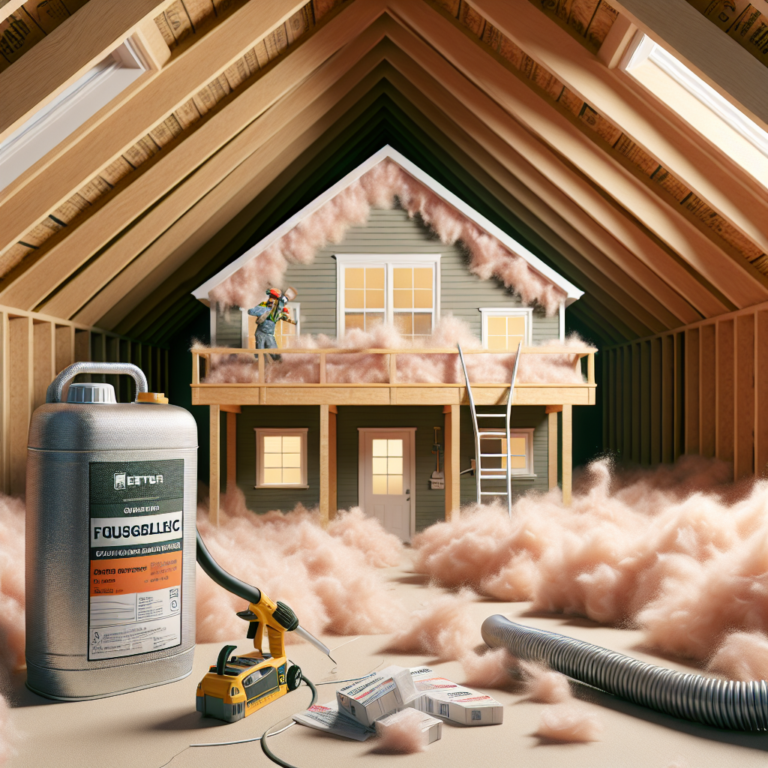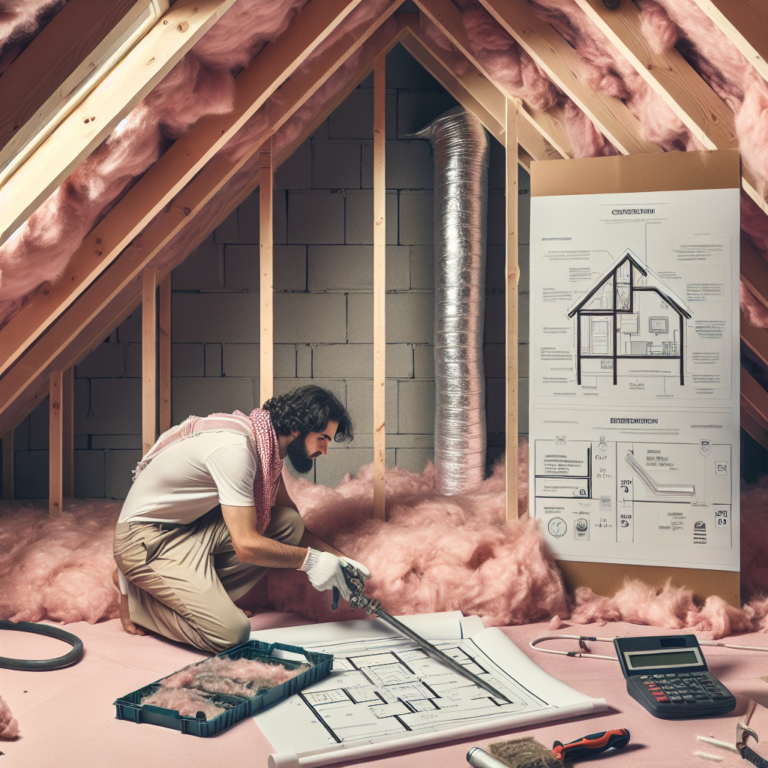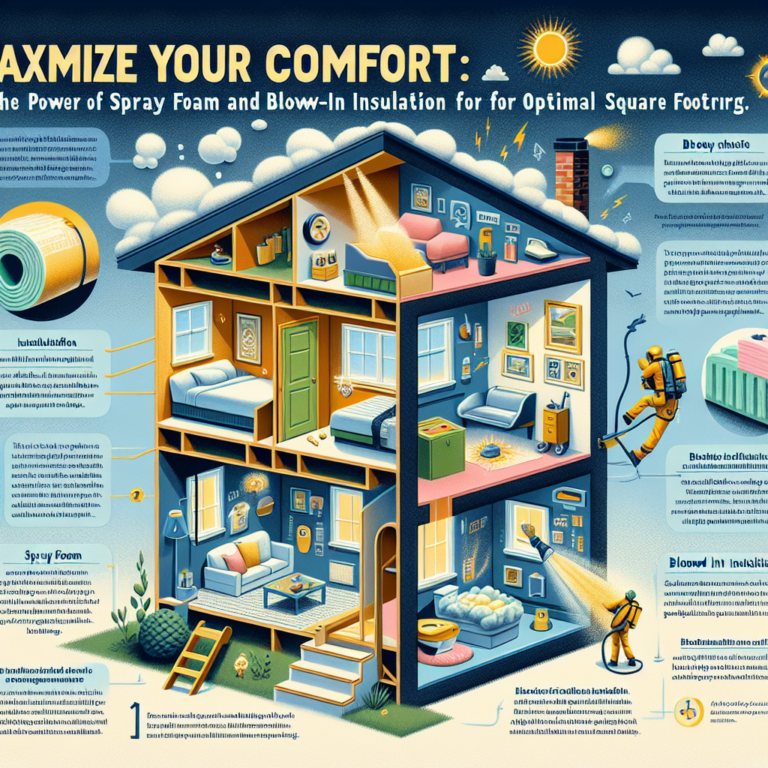-
Table of Contents
“Efficiently insulate your home with our top-quality blown insulation services in your area.”
Introduction
Blown insulation is a popular method of insulating homes in many areas, including my own. It involves using a machine to blow loose insulation material, such as fiberglass or cellulose, into the walls, attic, or other areas of a home. This method is known for its effectiveness in improving energy efficiency and reducing heating and cooling costs. In this area, blown insulation is a common choice for homeowners looking to improve the comfort and efficiency of their homes. In this introduction, we will explore the benefits and considerations of blown insulation in our area.
Benefits of Using Blown-In Insulation for Your Home in [Your Area]
Blown-in insulation has become a popular choice for homeowners in [Your Area] looking to improve the energy efficiency of their homes. This type of insulation, also known as loose-fill insulation, is made up of small particles of materials such as fiberglass, cellulose, or mineral wool. These particles are blown into the walls, attic, or other spaces in a home, creating a thick layer of insulation that helps to keep the indoor temperature regulated and reduce energy costs.
One of the main benefits of using blown-in insulation in [Your Area] is its ability to provide excellent thermal resistance. This means that it can effectively prevent heat from escaping during the colder months and keep cool air inside during the warmer months. This is especially important in [Your Area], where the climate can be extreme and energy costs can quickly add up. By using blown-in insulation, homeowners can significantly reduce their heating and cooling bills, making it a cost-effective investment in the long run.
Another advantage of blown-in insulation is its ability to fill in small gaps and crevices that may be missed by other types of insulation. This is particularly beneficial in older homes in [Your Area], where there may be uneven or irregularly shaped walls and ceilings. The small particles of blown-in insulation can easily conform to these spaces, creating a tight seal and preventing air leakage. This not only helps with energy efficiency but also improves the overall comfort of the home by reducing drafts and cold spots.
In addition to its thermal resistance and air sealing properties, blown-in insulation also has excellent soundproofing capabilities. The small particles of insulation can absorb sound waves, reducing noise from outside sources such as traffic or neighbors. This is especially beneficial for homes located in busy areas or near airports, where noise pollution can be a significant issue. By using blown-in insulation, homeowners can create a quieter and more peaceful living environment for themselves and their families.
One of the most significant advantages of blown-in insulation is its eco-friendliness. The materials used in blown-in insulation are often made from recycled materials, making it a sustainable choice for homeowners in [Your Area]. Additionally, the installation process of blown-in insulation produces minimal waste, making it a more environmentally friendly option compared to other types of insulation. By choosing blown-in insulation, homeowners can reduce their carbon footprint and contribute to a greener and more sustainable future.
Furthermore, blown-in insulation is a relatively quick and easy installation process. Unlike other types of insulation that may require extensive labor and time, blown-in insulation can be installed in a matter of hours. This is especially beneficial for homeowners in [Your Area] who may have limited time or want to avoid a lengthy and disruptive installation process. The quick installation also means that homeowners can start enjoying the benefits of blown-in insulation sooner rather than later.
In conclusion, blown-in insulation offers numerous benefits for homeowners in [Your Area]. From its excellent thermal resistance and air sealing properties to its soundproofing capabilities and eco-friendliness, it is a wise investment for any homeowner looking to improve the energy efficiency and comfort of their home. With its quick and easy installation process, blown-in insulation is a practical and cost-effective solution for homeowners in [Your Area] looking to reduce their energy costs and create a more sustainable living environment.
The Process of Moving Blown-In Insulation: What to Expect

Blown insulation has become a popular choice for homeowners looking to improve the energy efficiency of their homes. This type of insulation is made up of small particles, typically made of fiberglass or cellulose, that are blown into the walls, attic, or other areas of a home. It is a cost-effective and efficient way to insulate a home, and many homeowners in my area have been opting for this type of insulation.
If you are considering moving to a home with blown insulation or are planning to have it installed in your current home, it is important to understand the process and what to expect. In this article, we will discuss the process of moving blown-in insulation and what you can expect during this home improvement project.
The first step in moving blown-in insulation is to assess the current state of the insulation in your home. This is typically done by a professional insulation contractor who will inspect the walls, attic, and other areas of your home to determine the type and amount of insulation present. This is an important step as it will help determine if any additional insulation is needed and if there are any areas that need to be addressed before the new insulation can be installed.
Once the assessment is complete, the next step is to prepare the area for the installation of the new insulation. This may involve moving furniture, covering floors and furniture with protective sheets, and sealing any openings or cracks in the walls or attic. It is important to ensure that the area is clean and free of any debris before the installation begins.
The actual installation process involves blowing the insulation into the desired areas of the home. This is typically done using a large hose that is connected to a machine that blows the insulation into the walls or attic. The installer will start at the top of the area and work their way down, ensuring that the insulation is evenly distributed and reaches all areas. This process can be quite messy, so it is important to cover any furniture or belongings that may be in the way.
Once the insulation is blown in, the installer will use a special tool to level and smooth out the insulation, ensuring that it is evenly distributed and reaches the desired thickness. This is an important step as it will help prevent any gaps or uneven areas in the insulation, which can affect its effectiveness.
After the installation is complete, the installer will clean up the area and remove any protective sheets or coverings. They will also check for any areas that may need additional insulation and address them accordingly. The entire process can take anywhere from a few hours to a full day, depending on the size of the area being insulated.
It is important to note that during the installation process, there may be some noise and dust, so it is best to plan accordingly. It is also recommended to stay out of the area being insulated until the installation is complete and the area has been cleaned up.
In conclusion, moving blown-in insulation is a relatively simple and efficient process that can greatly improve the energy efficiency of your home. By understanding the process and what to expect, you can ensure that the installation goes smoothly and that your home is properly insulated. With blown insulation, you can enjoy a more comfortable and energy-efficient home for years to come.
Top Companies for Blown-In Insulation Installation in [Your Area]
Blown insulation is a popular and effective method of insulating homes and buildings. It involves using a machine to blow loose insulation material into walls, attics, and other spaces, creating a thick layer of insulation that helps to keep the interior temperature regulated and reduce energy costs. In [Your Area], there are several top companies that specialize in blown-in insulation installation, providing high-quality services to homeowners and businesses alike.
One of the top companies for blown-in insulation installation in [Your Area] is XYZ Insulation. With over 20 years of experience in the industry, XYZ Insulation has established itself as a leader in providing top-notch insulation services. They offer a wide range of insulation materials, including fiberglass, cellulose, and spray foam, and their team of trained professionals ensures that the installation process is done efficiently and effectively.
Another reputable company in [Your Area] is ABC Insulation. They have been in the business for over 30 years and have a strong reputation for their blown-in insulation services. ABC Insulation uses only the highest quality materials and their team of experts is well-versed in the latest techniques and technology for insulation installation. They also offer a free consultation and estimate, making it easier for customers to make informed decisions about their insulation needs.
For those looking for eco-friendly options, DEF Insulation is a top choice in [Your Area]. They specialize in using environmentally friendly materials, such as recycled denim and cellulose, for their blown-in insulation services. DEF Insulation also offers energy audits to help customers identify areas where they can improve their energy efficiency. Their team is committed to providing sustainable solutions for insulation needs while also reducing the carbon footprint.
In addition to these top companies, there are also several local businesses in [Your Area] that offer blown-in insulation installation services. These smaller companies may not have the same level of experience or resources as the larger companies, but they often provide personalized and attentive services to their customers. It is worth considering these local businesses as they may offer competitive pricing and a more personalized approach to insulation installation.
When choosing a company for blown-in insulation installation, it is important to do thorough research and consider several factors. One of the most important factors is the company’s reputation and track record. Reading reviews and asking for recommendations from friends and family can help in determining the reliability and quality of a company’s services.
It is also essential to consider the type of insulation material used by the company. Each material has its own benefits and drawbacks, and it is important to choose one that best suits the specific needs of the building. A reputable company should be able to provide information and guidance on the different types of insulation materials and help customers make an informed decision.
Another crucial factor to consider is the cost of the installation. While it may be tempting to choose the cheapest option, it is important to remember that quality and experience often come at a higher price. It is worth investing in a reputable company that uses high-quality materials and has a proven track record, as this can save money in the long run through reduced energy costs.
In conclusion, blown-in insulation is an effective and popular method of insulating homes and buildings. In [Your Area], there are several top companies that specialize in blown-in insulation installation, offering a range of services and materials to meet the specific needs of customers. When choosing a company, it is important to consider factors such as reputation, materials used, and cost, to ensure a high-quality and efficient insulation installation. With the right company, blown-in insulation can provide long-term benefits for both the environment and the building’s energy efficiency.
Q&A
1) What are the benefits of blown insulation in my area?
Blown insulation can provide several benefits in your area, including improved energy efficiency, reduced heating and cooling costs, and increased comfort in your home. It can also help to reduce noise levels and improve indoor air quality.
2) How does blown insulation compare to other types of insulation?
Blown insulation, also known as loose-fill insulation, is typically more cost-effective and easier to install compared to other types of insulation such as batt or spray foam. It can also provide better coverage and fill in hard-to-reach areas more effectively.
3) Is blown insulation suitable for all types of homes?
Blown insulation can be used in most types of homes, including older homes with existing insulation. However, it is important to consult with a professional to determine the best type and amount of insulation for your specific home and climate. Factors such as the age and condition of your home, as well as any existing insulation, should be taken into consideration.
Conclusion
In conclusion, blown insulation is a popular and effective method of insulating homes in many areas, including my own. It offers numerous benefits such as improved energy efficiency, reduced noise levels, and increased comfort. However, it is important to ensure that the insulation is installed properly and maintained regularly to maximize its effectiveness. Overall, blown insulation is a valuable investment for homeowners in my area looking to improve the insulation of their homes.




